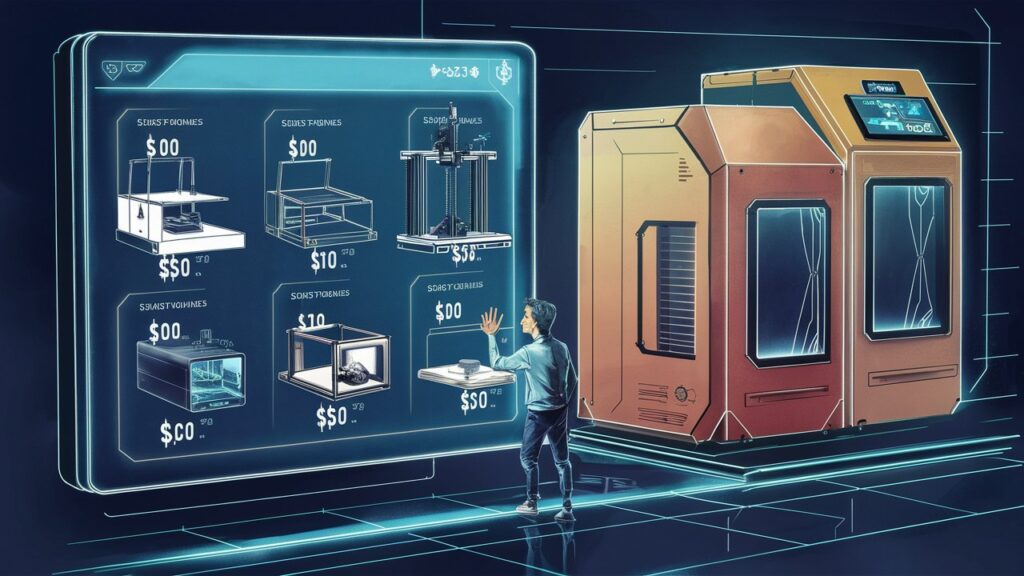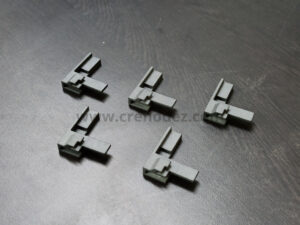Table of Contents
Introduction of 3D Printing Cost
3D printing cost is a crucial factor to consider when exploring this revolutionary technology. 3D printing, also known as additive manufacturing, has revolutionized how we create objects, from simple tools to complex machinery parts. But before diving into the world of 3D printing, it’s crucial to understand the various costs associated with it. This knowledge can help you make informed decisions and manage your budget effectively.

Types of 3D Printing Technologies
Fused Deposition Modeling (FDM)
FDM is the most common and accessible 3D printing technology. It uses thermoplastic filaments that are melted and deposited layer by layer to create a part. This technology is popular due to its affordability and ease of use.
Stereolithography (SLA)
SLA uses a laser to cure liquid resin into hardened plastic in a layer-by-layer fashion. It offers high precision and smooth surface finishes, making it ideal for detailed prototypes and models.
Selective Laser Sintering (SLS)
SLS involves the use of a laser to sinter powdered material, binding it together to form a solid structure. This technology is known for producing strong and durable parts, often used in industrial applications.
Others (DLP, PolyJet, etc.)
Other technologies like Digital Light Processing (DLP) and PolyJet offer unique advantages, such as high resolution and multi-material printing. Each technology comes with its own set of costs and benefits.
Initial Investment Costs
3D Printer Purchase
The cost of purchasing a 3D printer can vary widely, from a few hundred dollars for entry-level models to several thousand dollars for industrial-grade machines. The choice depends on your needs and budget.
Software Costs
3D printing requires specialized software for designing and slicing models. Some software options are free, while others require a subscription or one-time purchase fee. Some famous slicer softwares are CURA, Simplified 3D, Prusa Slicer, and Lychee.
Setup and Installation
Setting up a 3D printer involves more than just unboxing it. You may need to invest in additional tools, setup services, and even modifications to your workspace.
Material Costs
Filament for FDM
FDM printers use thermoplastic filaments like PLA, ABS, and PETG. The cost of these materials can range from $20 to $100 per kilogram, depending on the quality and type of filament.
Resin for SLA
SLA printers use liquid resin, which is generally more expensive than filament, costing around $50 to $200 per liter. However, it offers better detail and finish.
Powder for SLS
SLS materials, usually nylon powder, are among the most costly, ranging from $100 to $200 per kilogram. These materials are known for their durability and strength.
Other Materials
Other materials like metal, ceramic, and composite filaments or resins also add to the cost, with prices varying significantly based on the type and quality.
Operational Costs
Electricity Consumption
3D printers consume a considerable amount of electricity, especially during long print jobs. It’s essential to factor in these costs when budgeting.
Maintenance and Repairs
Regular maintenance is necessary to keep your 3D printer running smoothly. This includes replacing worn-out parts, calibration, and potential repair costs.
Labor and Expertise
Operating a 3D printer efficiently requires a certain level of expertise. Whether it’s your time or hiring a specialist, labor costs should be considered.
Post-Processing Costs
Cleaning and Finishing
Post-processing involves cleaning, removing supports, and sanding the printed parts. These tasks can be time-consuming and may require additional tools and materials.
Surface Treatment
Depending on the desired finish, you might need to invest in surface treatment processes like polishing, painting, or coating.
Assembly and Painting
For complex projects, additional assembly and painting might be required, which can add to the overall cost.
Hidden Costs
Failed Prints
Not all prints are successful. Failed prints waste materials and time, contributing to higher overall costs.
Time Costs
3D printing can be a time-consuming process, from designing to printing to post-processing. Time is a valuable resource that should be accounted for.
Learning Curve
There is a learning curve associated with 3D printing. Time spent learning and troubleshooting is another hidden cost to consider.
Cost Comparison: In-House vs. Outsourcing
Pros and Cons of In-House Printing
In-house printing offers control and flexibility but comes with high initial and operational costs. It’s ideal for frequent, customized printing needs.
Pros and Cons of Outsourcing
Outsourcing can be cost-effective for occasional or large-scale projects. However, it might lack the flexibility and control of in-house printing.
Reducing 3D Printing Costs
Optimizing Design
Design optimization can reduce material usage and printing time, leading to cost savings.
Bulk Printing
Printing in bulk can lower the per-unit cost and maximize the use of materials and time.
Recycling and Reusing Materials
Recycling failed prints and leftover materials can help reduce costs and waste.
Industry-Specific Costs
Medical Industry
The medical industry often requires biocompatible materials and precise prints, leading to higher costs.
Automotive Industry
Automotive applications demand durable and high-performance materials, which can be expensive.
Consumer Goods
For consumer goods, the focus is often on aesthetics and functionality, with a range of material costs.
Future Trends in 3D Printing Costs
Technological Advancements
Advancements in technology are likely to bring down costs over time while improving quality and speed.
Market Dynamics
As the market grows and competition increases, we can expect a reduction in prices for both equipment and materials.
Conclusion
Understanding the true 3D printing cost is crucial for making informed decisions. From initial investments to hidden costs, being aware of all factors can help you budget effectively and get the most out of your 3D printing endeavors.
FAQs
What is the cheapest 3D printing technology?
FDM (Fused Deposition Modeling) is generally the most affordable 3D printing technology, both in terms of printer cost and material expenses.
How can I reduce material costs in 3D printing?
Optimizing your design, using bulk printing, and recycling materials are effective ways to reduce material costs.
Is 3D printing cost-effective for small businesses?
Yes, 3D printing can be cost-effective for small businesses, especially for prototyping and small-batch production, provided the initial setup costs are managed efficiently.
What are the most common hidden costs in 3D printing?
Hidden costs include failed prints, time costs, and the learning curve associated with mastering 3D printing technology.
How does outsourcing 3D printing compare to in-house printing in terms of cost?
Outsourcing can be more cost-effective for occasional or large-scale projects, while in-house printing offers greater control and flexibility for frequent, customized printing needs.


